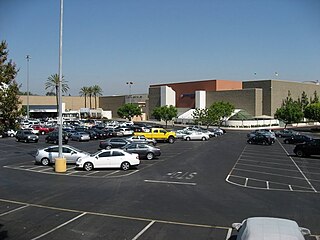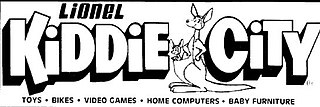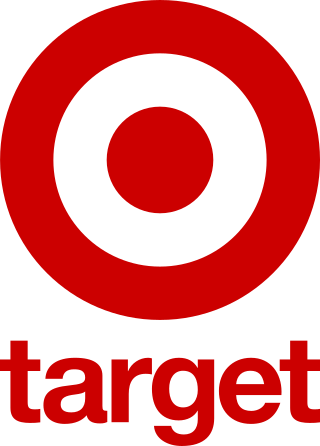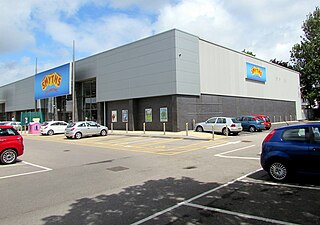Tandy Corporation was an American family-owned leather-goods company based in Fort Worth, Texas, United States. Tandy Leather was founded in 1919 as a leather supply store. By the end of the 1950s, under the tutelage of then-CEO Charles Tandy, the company expanded into the hobby market, making leather moccasins and coin purses, making huge sales among Scouts, leading to a fast growth in sales.

FAO Schwarz is an American toy brand and retail chain. The company is known for its high-end toys, life-sized stuffed animals, interactive experiences, brand integrations, and games.
Dollarama Inc. is a Canadian dollar store retail chain headquartered in Mount Royal, Quebec. Since 2009 it is Canada's biggest retailer of items for five dollars or less. Dollarama has over 1500 stores and is active in all of Canada; Ontario has the most stores.

Toys "R" Us is an American toy, clothing, and baby product retailer owned by Tru Kids and various others. The company was founded in 1948; its first store was built in April 1948, with its headquarters located in Parsippany-Troy Hills, New Jersey, in the New York metropolitan area.
Claire's is an American retailer of accessories, jewelry, and toys primarily aimed toward tween and teen girls. It was founded in 1961 and is based in Hoffman Estates, Illinois, a suburb of Chicago. The company is primarily owned by Elliott Management and Monarch Alternative Capital, but, in 2022, announced plans to go public with an initial public offering.

Lionel Corporation was an American toy manufacturer and holding company of retailers that was founded in 1900 and operated for more than 120 years. It started as an electrical novelties company. Lionel specialized in various products throughout its existence. Toy trains and model railroads were its main claim to fame. Lionel trains have been produced since 1900, and their trains were admired by model railroaders around the world for the solidity of their construction and the authenticity of their detail. During its peak years in the 1950s, the company sold $25 million worth of trains per year.
Shopper's World is an open-air shopping center in Framingham, Massachusetts. The original facility is of historical significance as one of the first suburban shopping malls in the United States upon opening in 1951; though it had a central courtyard and covered walkways, it was not fully indoor. The original structure was demolished and replaced by the current open-air facility in 1994. The retail park, with the adjacent Natick Mall in Natick, are major components of the Golden Triangle shopping district in the center of MetroWest, situated between Route 9 and Route 30.

Big Lots Stores, Inc. is an American discount retail chain headquartered in Columbus, Ohio, United States.
Waldenbooks was an American shopping mall-based bookstore chain operated by the Walden Book Company, Inc., and from 1995 was a subsidiary of Borders Group. The chain also ran a video game and software chain under the name Waldensoftware, as well as a children's educational toy chain under Walden Kids. In 2011, the chain was liquidated in bankruptcy.

Party City Holdco Inc, commonly referred to as Party City is an American publicly traded retail chain of party stores founded in 1986 by Steve Mandell in East Hanover, New Jersey. The companies headquarters are in Woodcliff Lake, New Jersey. The company is the largest retailer of party goods in the United States, Canada, and Mexico. The company operates over 850 company-owned and franchise outlets in over 70 countries around the world under the Party City, Halloween City, Toy City, Factory Card and Party Outlet brands.
SuperValu, Inc., was an American wholesaler and retailer of grocery products. The company, formerly headquartered in the Minneapolis suburb of Eden Prairie, Minnesota, had been in business since 1926. It is a wholly owned subsidiary of United Natural Foods (UNFI).

Puente Hills Mall, located in City of Industry, California, United States, is a major regional shopping center in the San Gabriel Valley region of Los Angeles County. It is most notable for serving as the filming site for the Twin Pines/Lone Pine Mall for the 1985 movie Back to the Future starring Michael J. Fox and Christopher Lloyd. Anchor tenants areRound 1 Entertainment, and Ross Dress For Less.
K·B Toys was an American chain of mall-based retail toy stores. The company was founded in 1922 as Kaufman Brothers, a wholesale candy store. The company opened a wholesale toy store in 1946, and ended its candy wholesales two years later to emphasize its toy products. Retail sales began during the 1970s, using the name Kay-Bee Toy & Hobby.
Farmers Trading Company Ltd is a New Zealand mid-market department store chain. Headquartered in Flat Bush, Auckland, Farmers operates 59 stores across New Zealand, specialising in family fashion, beauty, homewares, furniture, large appliances and whiteware.

The Lionel toy stores were American toy store chains under the ownership of Lionel Corp.

Target Corporation is an American retail corporation that operates a chain of discount department stores and hypermarkets, headquartered in Minneapolis, Minnesota. It is the seventh-largest retailer in the United States, and a component of the S&P 500 Index. The company is one of the largest American-owned private employers in the United States.

Smyths Toys Superstores is an Irish multinational chain provider of children's toys and entertainment products with over 275 shops throughout Ireland, the United Kingdom, Germany, Switzerland, Austria, France, and Netherlands. The business is owned by the Smyth family.

Children's World or Detsky Mir is a Russian children's retailer. Founded in June 1957, as of March 2022, the company had 1125 stores. It is the largest children's goods retailer in Russia and the CIS, with the retail chain in Russia, as well as in Belarus and Kazakhstan. In February 2017, PAO Detsky Mir listed its shares in an initial public offering. Maria Davydova is the CEO.
The retail format influences the consumer's store choice and addresses the consumer's expectations. At its most basic level, a retail format is a simple marketplace, that is; a location where goods and services are exchanged. In some parts of the world, the retail sector is still dominated by small family-run stores, but large retail chains are increasingly dominating the sector, because they can exert considerable buying power and pass on the savings in the form of lower prices. Many of these large retail chains also produce their own private labels which compete alongside manufacturer brands. Considerable consolidation of retail stores has changed the retail landscape, transferring power away from wholesalers and into the hands of the large retail chains.












